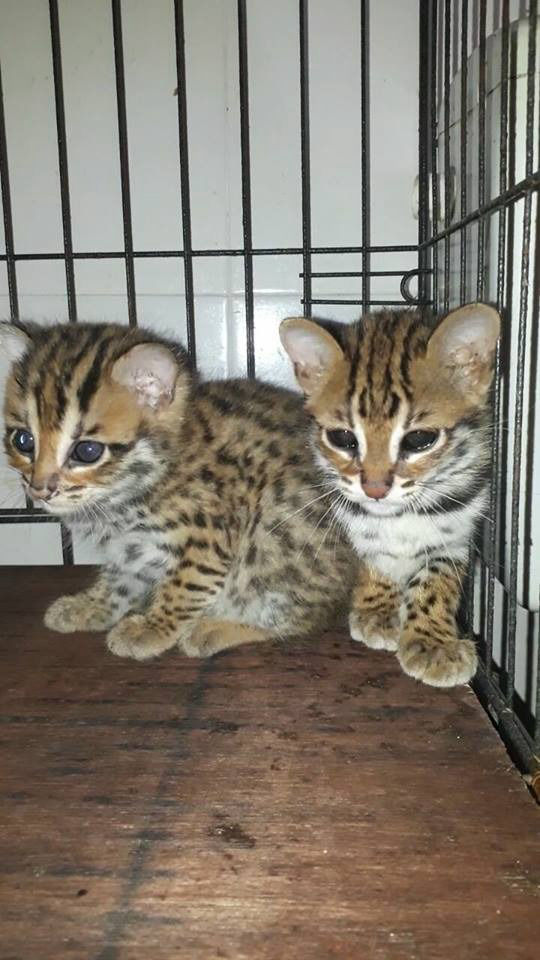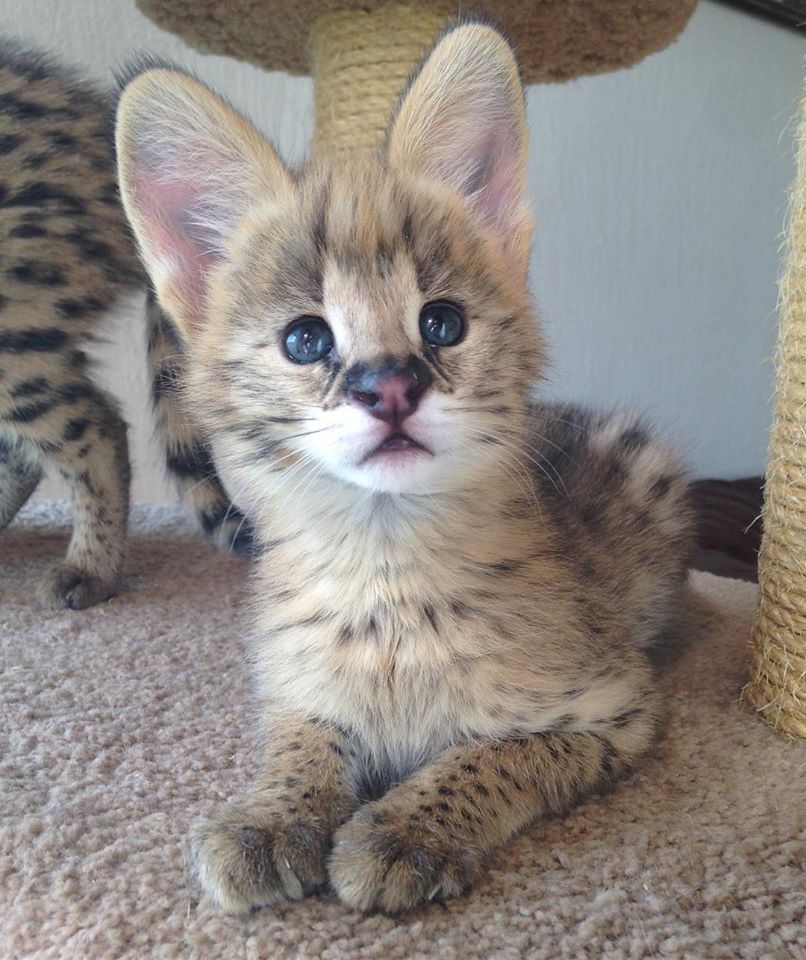Female African Servals for sale
Female African Servals for sale
Rainforest Serval The Serval (Leptailurus serval) is a medium-sized African wild cat. It is closely related to the African Golden Cat and the Caracal. The Serval is generally found in most parts of Africa excluding the arid desert regions to the north around the Sahara, parts of the western tip of Southern Africa and certain areas of the tropical rainforests of Central Africa.
Serval Diet
Although the Serval is highly specialised for catching rodents, it is an opportunistic predator whose diet also includes hares, hyraxes, birds (quails, flamingoes, quelea and teal), reptiles, insects, fish and frogs. The Serval has been observed taking larger animals, such as small antelopes, however, over 90% of the Servals prey weighs less than 200 grams (7 ounces). The Serval eats very quickly and if its food is big enough, it sometimes eats too quickly, causing it to regurgitate the food because of clogging in the throat.
Serval Habitat
Serval cats range from dry open grasslands to woodland savanna and even to the moister areas around the equatorial rainforests.
The Servals main habitat is the savanna, although melanistic individuals are more usually found in mountainous areas. The Serval needs water courses within its territory, so it does not live in semi-deserts. It is able to climb and swim, but seldom does so. The Serval has now reduced in numbers due to human population taking over its habitat and also hunting for its pelt. It is not necessarily now threatened with extinction, however, it may come to that unless trade is closely controlled.
Servals are found in well-watered savannah long-grass environments and are associated with reed beds. They occupy a variety of habitats all associated with water sources, they range up into alpine grasslands and can penetrate deep dense forests along waterways and through grassy patches. They will make use of arid areas in extreme instances and have occasionally done so in parts of south-western Africa.





